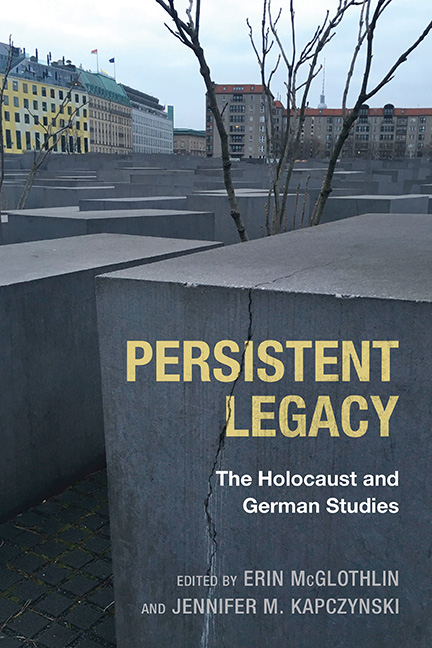Book contents
- Frontmatter
- Contents
- Acknowledgments
- Introduction
- Part I Abiding Challenges
- Part II The Holocaust in German Studies in the North American and the German Contexts
- Part III Disentangling “German,” “Jewish,” and “Holocaust” Memory
- Part IV Descendant Narratives of Survival and Perpetration
- Part V Remediated Icons of Memory
- Part VI Holocaust Memory in Post-Holocaust Traumas
- Notes on the Contributors
- Index
10 - Pinpointing Evil: Nazi Family Photographs, Remediated
Published online by Cambridge University Press: 17 June 2021
- Frontmatter
- Contents
- Acknowledgments
- Introduction
- Part I Abiding Challenges
- Part II The Holocaust in German Studies in the North American and the German Contexts
- Part III Disentangling “German,” “Jewish,” and “Holocaust” Memory
- Part IV Descendant Narratives of Survival and Perpetration
- Part V Remediated Icons of Memory
- Part VI Holocaust Memory in Post-Holocaust Traumas
- Notes on the Contributors
- Index
Summary
NEAR THE BEGINNING OF Ron Rosenbaum's investigative study Explaining Hitler (1998), the author reflects on a photograph of Hitler as an infant, taken in 1889 or 1890, when Hitler was “less than two years old.” Rosenbaum describes the image as a picture of “a round-faced, ruddy-cheeked child, a mildly pensive cherub.” Drawing on Michael André Bernstein's concept of “backshadowing,” or allowing our knowledge of an event's outcome to inform our interpretation of texts and images that preceded those events, Rosenbaum writes that we can, if we so wish, backshadow onto baby Hitler's “dark, questioning eyes” and “project upon that impressionable baby face the stirrings of some deep emotional disturbance.” He then, however, allows for an alternative and troubling possibility: “We could just as easily see there not incipient demonism but a kind of gentleness and sensitivity. We could just as easily predict this child would turn out to be Albert Schweitzer.” Many viewers of the photograph would find it impossible to connect this innocent human face with the inhuman acts for which Hitler was later responsible, but Rosenbaum's assertion is even more troubling, because it is a reminder that one cannot fix the meaning of a photograph; frozen in time, the static image provides no clear-cut information about its subject's past or future.
Rosenbaum's statements refer to readers of images who import knowledge about the intervening decades into their interpretations of photographs. His approach differs slightly from that of Bernstein, who cautions against fantasizing about the inner lives of subjects of historical photographs. Bernstein admonishes readers of Holocaust images that they should not use their knowledge of the Jews’ later fate to judge or condemn victims, wondering how they could possibly have failed to foresee what now appear to be the inevitable consequences of Nazi aggression. Bernstein is correct. Yet to write, as Rosenbaum does, about the presuppositions that contemporary viewers bring to bear, or what is in our minds as we scrutinize historical images, is another matter.
- Type
- Chapter
- Information
- Persistent LegacyThe Holocaust and German Studies, pp. 194 - 213Publisher: Boydell & BrewerPrint publication year: 2016

